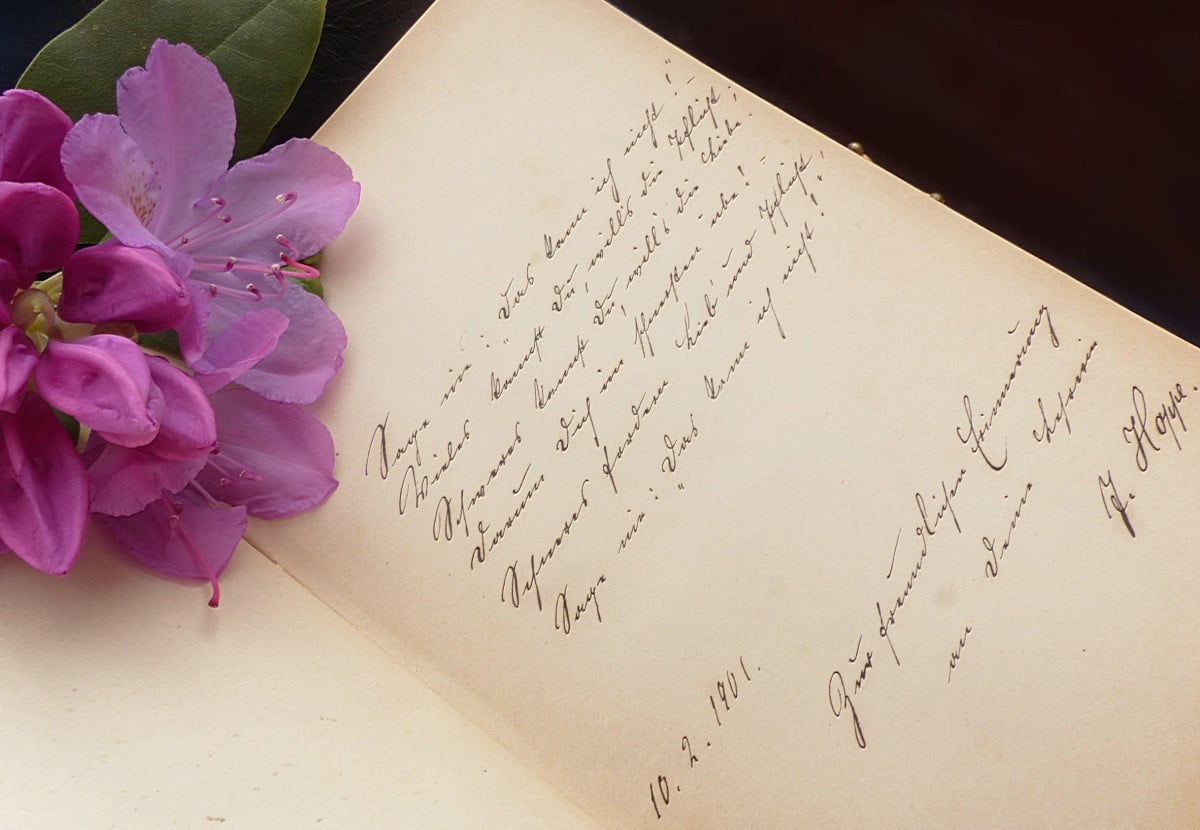
In order to understand a poem you need to know the different factors that compose it. Poetry is an art and follows a series of rules that the poet knows well and the good reader of poetry would like to know more.. It is true that in recent decades and years the rules that this literary genre has always followed have become more flexible. But these rules must be understood first to choose later what kind of poetry you want to create, or also enjoy reading.
The metric of a poem is made up of the elements that at some point we all study at school; and that we still come to remember today with more or less success and depth. In this article we gather the main rules in the metric of a poem.
First concepts: verse, stanza and poem
The verses are each of the lines that form the poetic textual body and that are subject to a measure.
The stanza, says the Royal Spanish Academy that is "each of the parts composed of the same number of verses and ordered in the same way as some poetic compositions.
The poem, then, is the total structure. It can have a variable length depending on the number of verses and the type of verse from which it is made.
The metric is used to be able to measure a poem, and its verses and stanzas are measured. It helps to structure the poetic text. That is why it is so important to know the metric if what we want is to write poetry or analyze it. The metric has different elements that measure the verses and stanzas: the rhyme that a verse normally has can be consonant or assonant, of greater or lesser art depending on the number of syllables, for which there is a form of measurement.
assonant and consonant rhyme
The consonant rhyme is one in which the final words rhyme consonantly, that is, matches consonantal and vowel sounds. Example:
[…] your body will leave, not your careed;
They will be ashes, but it will make sense;
dust they will be, more dust in loveed«.
Assonance rhyme only agrees on vowels. Example:
No inscription alguna,
where oblivion dwells,
there will be my tumba.

Verses of minor art and major art
minor art verses
Those verses that have up to eight syllables. The Spanish language, due to its cadence and rhythm, has the eight syllable as its verse par excellence. The minor art verses are divided into:
- 2 syllables: bisílabo.
- 3 syllables: trisyllable.
- 4 syllables: tetrasyllable.
- 5 syllables: pentasílabo
- 6 syllables hexasílabo.
- 7 syllables: heptasílabo
- 8 syllables: octosyllable.
major art verses
Son verses that are composed of more than eight syllables. In higher art in Spanish, the hendecasyllabic verse stands out (also due to Italian influence) which is usually combined with other minor art verses in poetic compositions. The verses of major art are the following:
- 9 syllables: eneasílabo.
- 10 syllables: decasyllable.
- 11 syllables: hendecasyllable.
- 12 syllables: dodecasyllable.
- 13 syllables: tridecasílabo.
- 14 syllables: Alexandrian.
The sharp and slurred words
The plain words are in Spanish the most abundant. In a poetic text they neither add nor subtract the last plain word of a verse. Example:
"The last [11 syllables] may close my eyes." "Pos-tré-ra" is a flat word that adds no extra syllable to the poem.
By contrast, the poems whose verses end in an acute word or esdrújula do modify the number of syllables. Palabras agudas add one syllable and esdrújulas subtract one instead.
Example of sharp words: "Fool men who accuse [7+1 = 8] / women without reason [7+1 = 8]".
Example of esdrújula words: «I remember that there is a world and that there are tears [12-1=11]».
metric licenses
sinalefa
It happens that in a verse a word can end in a vowel and the next one too. In this case, a signal is formed, that is, the last and the first vowel are joined, forming a single syllable. Example: leafalwind (leaf to the wind).
umlaut
The diaeresis is very evident because the author places it deliberately, that is, causes two vowels that should go together to separate into two syllables. It is the excision of a diphthong. In this way, and as also happens with the rest of the licences, the poet achieves the desired metric. Example: Tri-Fame-fo.
syneresis
It is the opposite of the diaeresis. Syneresis joins two vowels that in principle would have to be separated because they do not naturally form a diphthong. Example :peor/poeyes.
Hiatus
The hiatus supposes the opposite of the sinalefa. Two vowels that should join (word-final vowel and word-following vowel) do not. Example: thinka + en.
Main types of stanzas
In the next article you will find the main types of stanzas: couplet, tercet, soleá, quartet, redondilla, serpentesio, quatrain, copla, seguidilla, cuaderna vía, limerick, quintet, lyre, sextet, sextilla, broken foot couplet, eighth real, tenth or spinel, sonnet, romance, silva.

Analysis of "Constant love, beyond death"
Next we will analyze a poem by Francisco de Quevedo. It is a sonnet, this is a strophic form divided into two quatrains and two triplets, with consonant rhyme. In this way we will also be able to show how to indicate the number of syllables in the verse, the rhyme and the stanza structure. You can then check the capital letters that correspond to the hendecasyllables, that is, arte mayor (if there were lower case letters we would be facing minor art verses). Likewise, you also see how the rhymes are paired and how the stanzas are organized. For example, this poem has the following metrical structure: ABBA ABBA CDC DCD.
May my eyes close last [A]
shadow that the white day will take me, [B]
and you will be able to unleash this soul of mine [B]
time to his anxious eagerness flattery; [A]
but not, on that other side, on the shore, [A]
will leave the memory, where it burned: [B]
swimming knows my flame cold water, [B]
and lose respect for severe law. [A]
Soul to whom a prison god has been, [C]
veins that humor to so much fire have given, [D]
marrows that have gloriously burned, [C]
your body will leave, not your care; [D]
they will be ashes, but it will make sense; [C]
Dust they will be, more dust in love. [D]